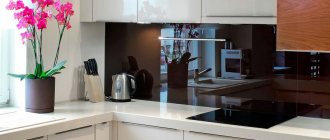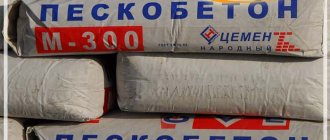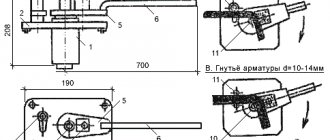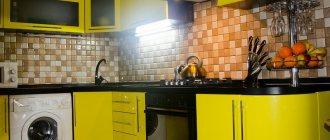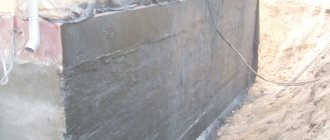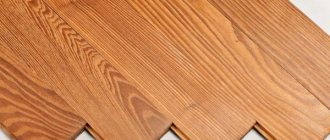It is not only citizens who have moved into a new home who have to choose a hob, but also those whose old kitchen stove has broken down. Today, consumers are presented with a wide range of models with electric and induction hobs. Gas-type kitchen stoves also remain relevant, but many newly built houses no longer provide for the use of gas for cooking. This article takes a closer look at whether an induction or electric cooktop is best for your home.
Modern hob stove
What is the difference between an induction hob and a conventional electric hob?
Electric panels contain a conventional cooking element, cast iron burners or coils, located under a ceramic coating. When exposed to them, the panel on the stove always heats up first, and only then does this heat begin to be transferred to the dishes in which the food is cooked.
With induction surfaces, everything is different: they do not have built-in heating elements, and when they operate, the heat immediately affects the ferromagnetic bottom of the cookware. The burner of such a stove contains a coil that performs the function of transferring alternating current, the alternating magnetic field of which directs an eddy current into the metal bottom of the cookware. In this case, it is not the surface of the stove that is heated, as in electric panels, but the cookware itself.
The principle of operation of the devices - what is the difference
There is a significant difference in operating principle between the two devices.
Electric stoves work like this: the surface of the stove itself heats up, the heat from which transfers to the cookware. That is, you turn on a specific burner, after which the stove begins to heat up. When heated, the stove itself becomes hot. Therefore, you should be careful here so as not to get burned.
An induction cooker does not provide heating to the surface of the cooker.
Heating occurs using current transmitted directly to the point of contact between the stove and the cookware. A nice feature is that heating occurs only when the dishes are filled. If you accidentally put an empty saucepan, then nothing will happen. It follows that it is not the surface that is heated, but only the bottom of the dish and its contents. The operating principle of the stove entails a number of other features and differences between hob surfaces. See also -
10 best glass-ceramic hobs
What cookware is used for induction and hob?
When determining which stove is better to choose, induction or conventional electric, it is recommended to take into account that only certain cookware is suitable for each type or that there are contraindications for using certain types of pans. When choosing a new kitchen appliance, you need to remember this nuance, so that after installing the stove and the first cooking tests you will not be disappointed. In the process of selecting and determining for yourself which hob to give preference to, it is recommended to consider the following points:
- On an electric stove panel, it is possible to cook in ordinary pots and pans made of any materials (cast iron, ceramics, enamel, etc.).
- For cooking on an induction cooker, you need to purchase special cookware with a magnetic bottom.
Attention! To be able to use ordinary utensils for cooking on such a surface, special ferromagnetic stickers must be glued to them.
Recommended cookware for induction cookers
Another feature of the induction panel is that if you place dishes with a diameter of less than 12 cm on it, it will not recognize it. Therefore, boiling eggs in a small ladle or coffee in a Turk will not work. The panel will only start working if you place dishes on it that cover 70% of its surface.
Where does food cook faster: on an induction or electric stove?
It should be noted that not every housewife likes to spend a long time preparing various delicious dishes, and some simply do not have such an opportunity. Therefore, this feature should also be taken into account when choosing a slab.
For the electric panel to bring the water in the pan to a boil, it will only need to spend about 4-5 minutes on its heating and another 9-12 minutes on boiling the water in the pan. The burner can heat up to 400 degrees Celsius.
Note! In addition to the fact that this hob takes a long time to heat up, it can also heat food unevenly. It may remain cold in one place and burnt in another.
Induction panels, on the other hand, require little heating time (a few minutes) and only 2 to 3 minutes to bring the water to a boil. The maximum hotplate temperature is 60 degrees Celsius.
Attention! Due to the fact that electromagnetic currents are directed directly to the food, the time it takes to heat it, unlike an electric stove, takes much less time.
Ease of use
Both types of appliances are much more convenient than gas stoves, but they work differently.
The electrical panel first becomes hot itself, and then heats the dishes: this happens thanks to the thermal energy transmitted by the conductor. For cooking, you can use dishes made of a variety of materials, but always with a flat and thick bottom, the diameter of which must match the size of the burner (this will help avoid heat loss). The induction surface heats the cookware and its contents, and the diameter of the bottom does not matter - the main thing is that the material is magnetized. Cast iron and enameled pans with a completely flat bottom, as well as stainless steel containers, are suitable.
Both types of panels, unlike gas panels, operate quite quietly. But if an electric stove is absolutely silent, then an induction stove makes specific sounds when the cooling fans are turned on. According to user reviews, you quickly get used to them and stop noticing them.
Electric and induction devices come in a variety of sizes, which allows them to be integrated into any kitchen set. The first type of product can have from two to five burners, and the second - from one to six. Control can be either touch or mechanical.
Which hob is safer?
It is very important that the food preparation device poses as little danger as possible. This is especially necessary in families with small children. Induction cooktops are considered the safest. Firstly, it cannot be turned on until a pan or other utensil is placed on it. Secondly, due to the fact that the burners in such stoves do not heat up, therefore, it is impossible to get burned by touching them. Thirdly, even if a small metal object in the form of a spoon or fork accidentally falls on it, it will not start to heat up, since for this to happen, you need to place a pan with a ferromagnetic bottom of the appropriate size on it.
Frying pan with ferromagnetic bottom
As for electrical panels, they are significantly inferior in terms of safety, since they tend to heat up strongly to a red-hot state and take a long time to cool down.
Advantages and disadvantages of electric stoves
The first and most obvious advantage is that you can use any cookware with electric hobs: ceramics, glass, brass... This means that when purchasing such a stove you will not have to change your set of kitchen utensils. Another advantage is the low price. An induction panel from a well-known brand can cost quite a lot of money, while finding a good electric surface will be easy and without breaking the bank.
However, they wouldn't be so cheap without certain disadvantages. Firstly, cookware on an electric stove takes much longer to heat up than on an induction stove, and also cools down slowly. Roughly speaking, you will first have to wait until the pan is suitable for frying, and then keep a close eye on the food. And if you reduce the power, it’s not a fact that the burner will have time to cool down before everything burns out. Induction and gas stoves are much more convenient in this regard, since they change the degree of heating almost instantly.
Secondly, since the bottom of the container is in direct contact with the hot burner, the heating of bulk woks and cauldrons with large walls will be uneven, which will slow down the cooking process.
Again, because electric surfaces operate the old-fashioned way, with a heating element, it is easy to get burned on them. If you have small children or naughty animals at home, it is better to buy an induction panel, which will only heat up from the heat of the cookware, and then not to such an extent as to burn someone.
Which hob is more economical?
Conventional electric burners, which are also called “cast iron pancakes,” are characterized by a long heating period, and after the end of cooking and turning them off, a long cooling period. It is possible that the dish may burn even if the burner is not working. While induction hobs heat food much faster, due to the fact that they do not waste time on heating themselves. Therefore, when operating the latter, electricity is consumed 1.5 times more economically, and unnecessary time is not wasted waiting for heating, as when using electrical panels. For example, to bring a liter of water to a boiling state, it will take a little more time than it would be done in an electric kettle.
Pros of an induction cooker
Safety
Even when an induction cooker is turned on without special cookware, it does not begin to heat up, so you do not have to worry about the safety of small children and pets and do not be afraid of fires. You can also safely place a spoon or fork on the working stove without any worries, since small objects on the induction surface will not heat up in principle.
Easy to clean
The problem of cleaning gas and electric stoves from burnt food residues and stains is familiar to everyone, but food and liquids will not burn on an induction surface. Before starting work, simply wipe the surface with a damp cloth to remove dust and small dust residues.
Induction hob, Bora
Reminder : induction cookers cannot be cleaned with metal sponges and abrasive detergents; it is preferable to use special cleaning agents.
Economical
A pleasant bonus in daily use will also be low energy consumption compared to conventional electric stoves.
Miele Italia
Heating rate
One of the advantages of gas stoves over electric stoves is traditionally considered to be the ability not to waste time waiting for the surface to heat up. Induction hobs also heat up to the desired temperature fairly quickly. So, for example, it will take 3-4 minutes to boil 1.5 liters of water on an induction stove, and on average about 10 minutes on an electric stove.
Booster
The booster is an additional feature that many induction cooktops have. It allows you to heat and cook food as quickly as possible. The booster transfers the power of one burner to another for some time, increasing its performance.
Do induction and electronic cooktops have any effect on other kitchen appliances?
It is not recommended to install kitchen stoves with an electric hob near a refrigerator, since during cooking it becomes very hot, and this heat is transferred to nearby objects. This will lead to the fact that both devices will compete with each other in transmitting warm and cooled temperatures.
As for induction surfaces, they should not be located next to a washing machine, microwave, oven, etc. Otherwise, the magnetic field will disrupt the normal operation of these devices.
In this case, everyone determines for themselves what is best for them based on the available equipment in the kitchen.
Which stove has the highest cooking speed and why?
Users of both models have already conducted numerous experiments on this issue. Some of them have been published in various sources. I will give just two examples of such studies.
In the first case, the same volume of water boiled after 3 minutes 35 seconds on an induction panel and after 5 minutes 30 seconds on an electric one.
I simply show the results of the second test with a picture. Natural gas was also involved here.
Such information can be easily found on forums where the advantages and disadvantages of induction cookers and their analogues are discussed. In all these experiments, induction top comes first.
It always works faster than its prototype with resistive heating elements. This saves not only electrical energy, but also frees up time for cooking or other activities.
And this can only be explained by the fact that the heat itself, released in the bottom of the dish, immediately affects the food being processed, bypassing any intermediate elements.
And this obvious advantage turns out to hide one of the disadvantages of preparing culinary delights.
For example, quickly cooking soup with pieces of solid food on induction will cause the broth to boil away quickly, and everything else will slow down the cooking. You will have to reduce the heating power and increase the heat treatment time.
Let us pay attention to one more important point that affects the heating rate of the model under consideration. The photo below shows how the high-frequency coil zone actually works.
On the moved frying pan, the water boiled only in the place where Foucault eddy currents are induced. The rest of the cookware heats the food only due to heat transfer from this area.
Therefore, manufacturers always designate the working area with concentric lines. Optimal heating will occur only when the boundaries of the bottom of the frying pan or pan coincide with the marked markings.
The utensils should be selected correctly and accurately installed along the lines of markings applied by the manufacturer.
I will not hide the fact that among dishonest manufacturers there are cases when the boundaries of the working area are specifically shown with an increased diameter. This allows you to sell low quality goods at an inflated price.
It’s not difficult to recognize this trick: just watch the picture of the water starting to boil, as in the photo above. If the frying pan completely covers the entire space of the drawn circle, and air bubbles are released unevenly and only from the central circle, then the deception is obvious.
When frying meat or fish dishes on such a stove, the food will burn in the central part of the frying pan, and the heat at the edges will not be enough to cook it properly. Over time, deformations will occur in such a bottom due to its uneven heating.
When the cookware is smaller than the area of the heating zone, the high-frequency magnetic field does not work effectively. I show with another photograph the process of boiling water in a pan with a reduced bottom area and pieces of ice located nearby.
The water boils, but the ice does not melt. This indicates that the glass-ceramic surface of the panel does not heat up, and the heat is created only inside the special ferromagnetic cookware.
Features of induction surfaces
What are the features of induction panels? The article mentions that they have a negative impact on other kitchen appliances. In this regard, the question arises: are they harmful to the human body? The answer will be positive: the influence, although small, is there. Therefore, to minimize the impact of the induction panel, you must follow a few simple rules:
- the ferromagnetic bottom of the pan must cover the entire area of the burner;
- When the device is turned on, it is not recommended to press your whole body against it;
- It is better to stir the dish using a wooden object rather than a metal one.
In addition, induction has another significant disadvantage compared to electric - quite loud noise during operation. This is due to the fact that a fan constantly operates to cool this equipment. Without it, the stove cannot operate, since if it is not cooled, it will overheat and turn off.
Induction surface
Price
An induction panel, despite being economical to use, is more expensive than its electric counterpart. The more features it has, the higher the price. Also, when installing the device, it is necessary to replace the old electrical wiring and select a separate electrical group with a separate circuit breaker, because the household appliance is quite powerful. This entails additional costs.
Compared to induction, an electric stove is a familiar and inexpensive technique, which also does not require the purchase of special utensils.
Advantages of electric stoves
Despite the fact that induction cookers are significantly superior in parameters to electric ones, the latter have several significant advantages. Among them are the following:
- the price of kitchen stoves with an electric hob is much lower than others;
- there is no noise during their operation. During the cooking process, no monotonous irritating sounds are heard;
- the widest selection presented by different manufacturers. Modern models are able to satisfy the taste of any consumer. You can choose any configuration, color, number of burners and price you like.
Electrical surface
Advantages
Considering the features of operation, an induction cooker has its pros and cons. First, the advantages of the type of stoves under consideration will be presented.
Performance
The operating efficiency of an induction cooker is the highest among its analogues.
Important! The efficiency of an induction surface is 90%, while for a gas stove this figure corresponds to 60%, for an electric stove with a glass-ceramic coating - 50%, and for a conventional electric stove with metal pancakes - 30%. This affects not only the cooking time, but also the energy consumption.
Since the vortex flows that heat the bottom of the dish move in a circle, heat loss is minimized. Heating occurs almost instantly, so cooking time is reduced by 30%. For example, to bring 2 liters of water to a boil, a gas stove takes 8 minutes, an electric stove with glass ceramics takes 9 minutes, and an induction stove takes only 6 minutes.
Economical
Taking into account the fact that induction cookers are powered by electricity, it makes sense to compare them with electric ovens of the same class. Thanks to induction, the energy consumption of this type of furnace is half as much. This is due to the fact that:
- resources are spent on obtaining an electromagnetic field, and not on heating the coil, heating element or other heating element;
- all electricity consumed goes directly to heat transfer to the products, and not to the hob, burner, air, etc.
In terms of energy efficiency, induction cookers are marked with the letters A++, A+, A, depending on the class. Even if you choose a hob that is not of the highest class, thanks to the available heating modes, you can independently set the power consumption and thereby reduce electricity costs.
Functional
Modern hobs are equipped with more functionality, which allows the housewife to spend less time near the stove. In particular, the following options are available:
- temperature mode – allows you to set the power (usually 15-16 options are offered);
- intensive heating - “booster” - allows you to add 50% of the power from one burner to another for the fastest possible heating;
- temperature maintenance – heats up with equal intensity (especially good for moonshine brewing);
- automatic shutdown - occurs after removing the dishes from the hob;
- timer – turns off the burner or gives a signal after a specified time has elapsed;
- delayed start – starts cooking after a set time period;
- recognition of the material and size of the cookware - it heats only along the contour of the bottom of the cookware, regardless of whether it is larger or smaller than the designated heating zone;
- defrosting, heating – maintains heat for a long time;
- safety shutdown - turns off the burner if liquid has leaked onto the hob;
- Child lock – locks the control panel;
- residual heat indicator – shows the current temperature of the heating zone;
- memory – for saving specified cooking modes;
- powermanager – controls energy consumption, allows you to set consumption rates;
- pause – allows you to turn off the stove, fixing all current parameters, in order to turn it back on after a while;
- display showing operating power and cooking duration.
Heating rate
Heating on the hob occurs almost instantly. When the burner is turned on, the heat generated in the bottom of the pan is immediately transferred to the food. Moreover, this happens evenly - over the entire bottom area. And taking into account the additional “booster” function, you can increase the heating or boiling speed even more (approximately 1.5 times).
On a note! The heating speed depends on the stove itself (its power), the cookware (thickness, volume, material) and the food (liquids heat up faster than solid ingredients).
Care
Unlike all other kitchen stoves, an induction cooker is very easy to keep clean. After all, its glass-ceramic surface does not heat up to transfer heat. On the contrary, heat is transferred from the bottom of the pan to the hob, or rather to the heating zone. But even in this case, the surface will not be so hot that fat, drops and pieces of food can burn and form carbon deposits . After cooking is complete, all the pieces, crumbs and drops remain moist and can be easily wiped off with a dry or damp cloth.
Advice! If necessary, the hob can be wiped with a sponge soaked in detergent to easily dissolve greasy stains.
Control
The following control methods are mainly used in induction furnaces:
- touch panel - to select the required function, just touch the corresponding icon with your finger or move the slider to the desired value manually;
- remote control – allows remote control without having to run to the stove every time
All functions and settings are intuitive and simple. Thanks to this, it is very easy to operate the kitchen stove - it itself is able to provide and control the entire cooking process.
On a note! More expensive models have a separate control panel for each burner, where you can set the power and timer.
Appearance
An induction furnace is good not only for its functionality and capabilities, but also for its rather stylish appearance. A perfectly flat and smooth surface can be made of glass ceramics or tempered glass. There are no switches, buttons or knobs on the hob - all functions are set on the glass surface, under which sensors are installed. There are no unnecessary elements or irregularities, everything is beautiful, thoughtful and understandable. Heating zones are outlined with round, oval or square lines. This stove will fit harmoniously into any interior.
Safety
As mentioned above, the heating zone does not heat up, and the hob itself is generally cold. At the most, the surface can heat up from hot dishes standing on it, but these temperatures are not critical, so the risk of getting burned is reduced to almost zero . After removing the dishes from the stove, the surface cools down very quickly and within 5-10 minutes it becomes room temperature.
Another not so obvious, but no less important, is the fact of minimal heat loss. That is, in the summer, while cooking, you won’t have to languish in the kitchen from the heat and stuffiness, using additional air conditioners and fans. This also has a beneficial effect on health.
Changing heating zones
More expensive models use the so-called FlexZone - this is the combination of several burners into one large area. This function is very helpful when you need to cook dishes in non-standard or too large dishes.
On a note! There can be one combined heating zone on the hob (if out of 4 burners only two can be combined) or two (when all four burners can be connected to neighboring ones).
Manufacturability
Modern furnaces are almost completely automated and equipped with various sensors to control operation. They maintain a certain temperature for a specified time, and automatically turn off if you place an empty dish, spill liquid on the surface, or when the size of a metal object is smaller than required.
On a note! You can use the already preset cooking mode so as not to set all the parameters manually.
